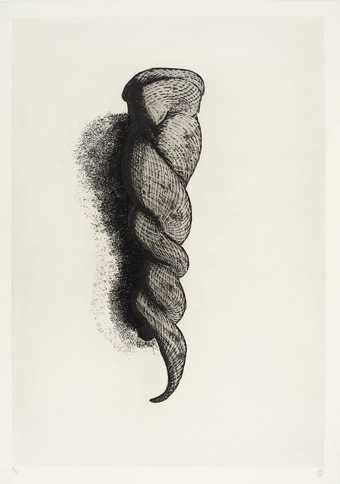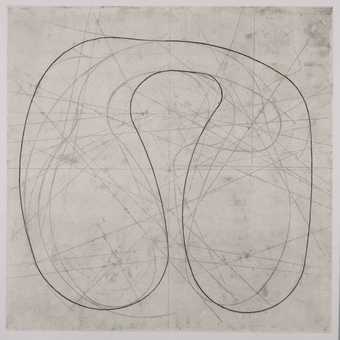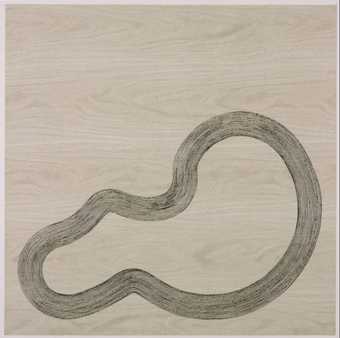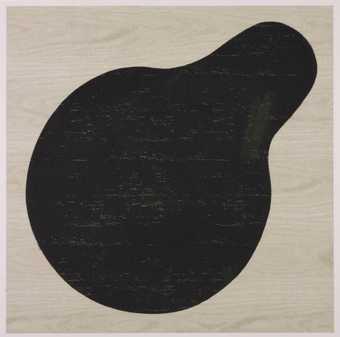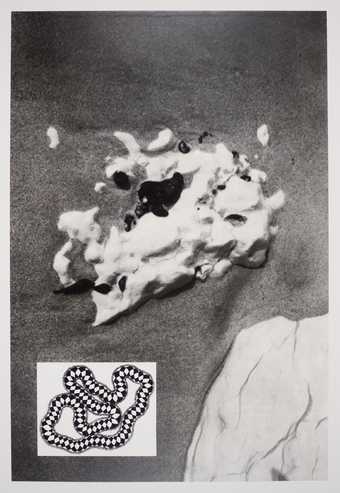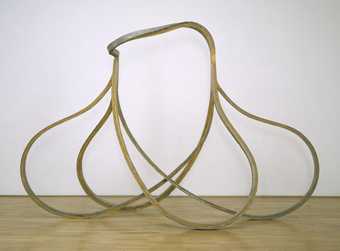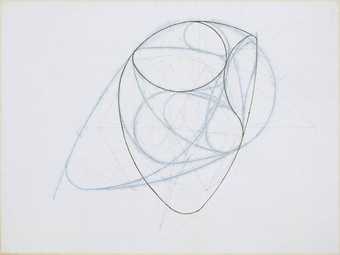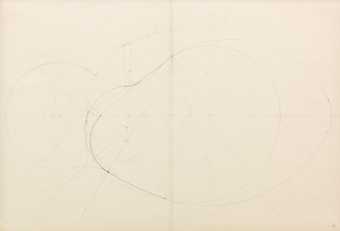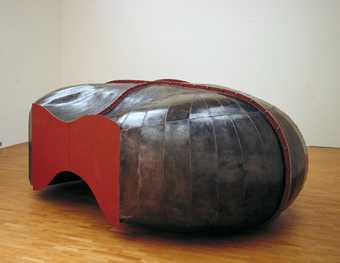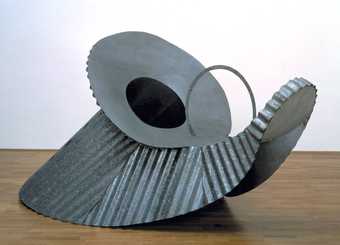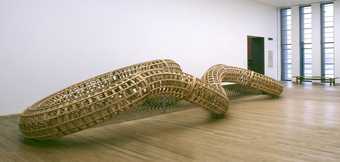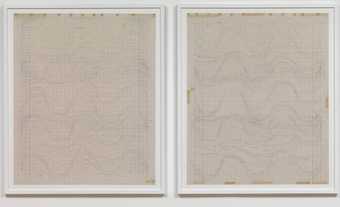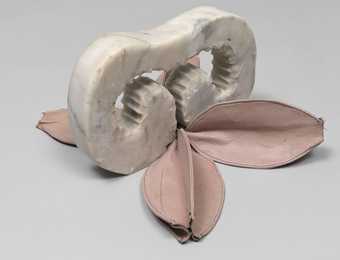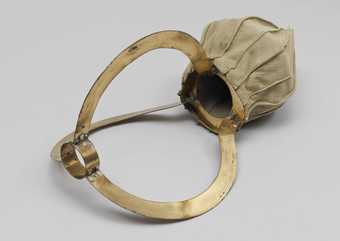
Not on display
- Artist
- Richard Deacon born 1949
- Medium
- Graphite and ink on paper
- Dimensions
- Support: 460 × 645 mm
- Collection
- Tate
- Acquisition
- Presented by the Weltkunst Foundation 1988
- Reference
- T05208
Summary
Untitled Drawing is a pencil drawing on cream cartridge paper. It was produced in 1980, a year after Deacon completed his series of drawings, It's Orpheus When There's Singing, one of which is in Tate's collection (It's Orpheus When There's Singing #7, 1978-9, Tate T04859). In conversation with a Tate curator (29 October 1996), Deacon suggested that this drawing was consciously made as a form of relief from the precise methods employed in the earlier series. Those drawings emerged from the controlled use of grids, compasses and meticulously applied geometry. Untitled Drawing, however, was an attempt to approach the work of image-making more directly.
The drawing shows two rounded vessel shapes connected to each other by a band or tube, almost umbilical in its associations. Deacon describes the image he had in mind when embarking on this work as related to the Yin/Yang concept of the harmonious interaction of opposites. This concept is usually imaged as a circle divided by a curved line through its centre, which separates black from white. This familiar symbol is suggested by the vessel on the right-hand side of the drawing, in which the image of a divided circle is discernable. Deacon recalls that, when making the work, he used rhythmic gestures to enhance the movement of his lines and to fill the paper. He erased lines and added new ones over and over again. The repeated rubbings out remain visible as smudged, shadowy lines beneath the image.
The drawing does not refer to any contemporaneous sculptural idea, although Deacon believes that it is related to the much later work of 1987/8, Before My Very Eyes #2 (private collection). However, the extraordinary sense of movement suggested by Untitled Drawing also recalls the serpentine curves of Deacon's laminated wood sculptures, such as For Those Who Have Ears #2 (Tate T03958). The drawing's diagrammatic quality echoes the open linear structures of such work.
Further reading:
A Quiet Revolution: British Sculpture Since 1965, exhibition catalogue, Museum of Contemporary Art, Chicago 1987.
Jon Thompson, Pier Luigi Tazzi and Peter Schjeldahl, Richard Deacon, London 1995.
Sculptors' Drawings Presented by the Weltkunst Foundation, broadsheet, Tate Gallery, London 1994 [p.3].
Helen Delaney
November 2001
Does this text contain inaccurate information or language that you feel we should improve or change? We would like to hear from you.
Technique and condition
A pencil drawing on cream laid cartridge paper. The paper is discoloured with slight damages in the corners from drawing pin marks. On the reverse of the support at the top right, is an arrow indicating which way the drawing should be viewed. The drawing was originally attached at the four corners to the mount with an adhesive.
The image is in black crayon. Repeated rubbings out of underdrawing are visible as smudged, shadowy lines beneath the image and the paper has a slightly rubbed surface.
On acquisition the drawing was removed from its mount and pressed to remove slight creases in the support. It was then float mounted onto conservation board and fitted into a simple L-section frame.
Jo Crook<1995>
Explore
- abstraction(8,615)
-
- non-representational(6,161)
-
- irregular forms(2,007)
You might like
-
Richard Deacon Another Curious Carrot
1991 -
Richard Deacon Muzot #1
1987 -
Richard Deacon Muzot #2
1987 -
Richard Deacon Muzot #3
1987 -
Richard Deacon Muzot #4
1987 -
Richard Deacon [no title]
1997 -
Richard Deacon For Those Who Have Ears #2
1983 -
Richard Deacon It’s Orpheus When There’s Singing #7
1978–9 -
Richard Deacon Untitled Drawing
1981 -
Richard Deacon Struck Dumb
1988 -
Richard Deacon If The Shoe Fits
1981 -
Richard Deacon After
1998 -
Jeffrey Steele [no title] (Preparatory Drawing for Abakum)
1971 -
Richard Deacon Art For Other People #12
1984 -
Richard Deacon Art For Other People #6
1983

